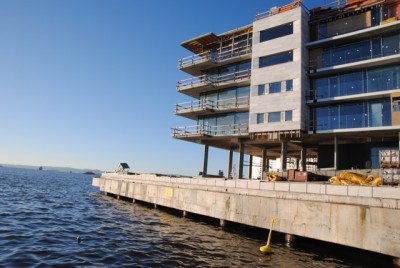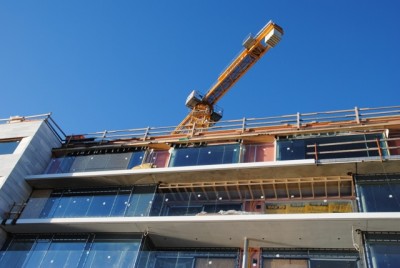Oslo has confirmed its dubious distinction as having the most expensive real estate in already-expensive Scandinavia, with housing prices now running twice as high as in Copenhagen. Central bank bosses worry about high debt levels, but most real estate experts think prices will rise again next year.

The average price per square meter in Oslo is now NOK 52,800, more than double the average in central Copenhagen, where they’re the equivalent of NOK 23,100, and also much higher than in central Stockholm (NOK 38,200).
Six years ago, housing prices in the prime central districts of all three Scandinavian capitals were at the same level. The turning point came at the end of 2007. Until then, the markets in Oslo, Copenhagen and Stockholm had all been experiencing around the same growth curve. A crisis in residential real estate markets globally hit Copenhagen earliest and hardest, though, and Stockholm also suffered a dip. Oslo saw only a slight decrease in 2008-2009, and then bounced back with just as strong growth as before.
The resilience of Norway’s oil-fed economy is not the only factor pushing up prices. Norway has a higher rate of immigration, population growth and employment than Sweden, both of which force prices higher by putting pressure on housing supplies.
Analyst Bjørn Erik Øye of the analysis firm Prognosesenteret told newspaper Aftenposten that the Norwegian housing market is also more exposed to speculation and to people buying up flats in order to rent them out. The Norwegian rental market is also less regulated than in Sweden and Denmark.

One economist has another, more surprising explanation for the enormous differences in square-meter prices between Oslo and Copenhagen. Besides the fundamental economic factors such as population growth, immigration, centralization and a relatively low rate of real estate construction, Harald Magnus Andreassen of Swedbank First Securities points to Norwegian optimism as a decisive factor. “Here in Norway, people expect prices to keep on growing and growing,” he said.
According to a recent poll by real estate firm Eiendomsmegler1, 61 percent of Norwegians expect already-high housing prices to continue to rise next year. This is in line with the experts at state statistics bureau SSB, who predict an increase of 7.2 percent in 2013. Norges Bank, the Norwegian central bank, released a prognosis Tuesday which is even more optimistic. They predict 20 percent growth in housing prices over the next three years, with growth of 7.7 percent in 2013 and 5.3 percent in both 2014 and 2015. At the same time, they predict that interest rates on housing loans will stay at the same low level as today – which means being a homeowner in Norway likely will continue to pay off well into 2015.
Concerns over rising household debt
Besides high immigration and low unemployment, Norwegian homeowners can also thank the euro crisis for the appreciation of their assets. Bad times and low interest rates abroad force the central bank to maintain low interest rates at home even though this makes Norwegian households more vulnerable to economic troubles.
Jan F Qvigstad, vice president of Norges Bank, told Aftenposten on Wednesday that he’s worried about the vulnerability of Norwegian households with high levels of debt, but says he can do nothing more to stop it than inform people of the risks they’re assuming. Commercial banks, though, may need to boost their reserves to cover their home loans, with potential demands by state authorities already seeming to hit the stock of large local banks like DNB. Its shares fell more than 5 percent on Wednesday after brokerage SEB Enskilda warned it may need to move some of its profits into reserves instead of paying it out to shareholders in the form of dividends.
Controlling the flow of oil revenues into Norway’s economy remains critical, argue some. “The most important way to influence (borrowers) is to regulate how much oil money is flowing into the economy,” says Qvigstad, which is another way of pointing the finger at Finance Minister Sigbjørn Johnsen. The only way to temper the insatiable Norwegian appetite for housing loans, writes Aftenposten, would be for Johnsen to further tighten the state’s belt by reducing the amount of oil money being pumped into the national budget. Johnsen has already done that, much to the disappointment of those clamouring for everything from better train systems to more nursing homes and schools. Real estate prices did seem to stabilize earlier this fall, but the lull may not last for long.
Views and News from Norway/Emily Williams
Please support our news service. Readers in Norway can use our donor account. Our international readers can click on our “Donate” button:

